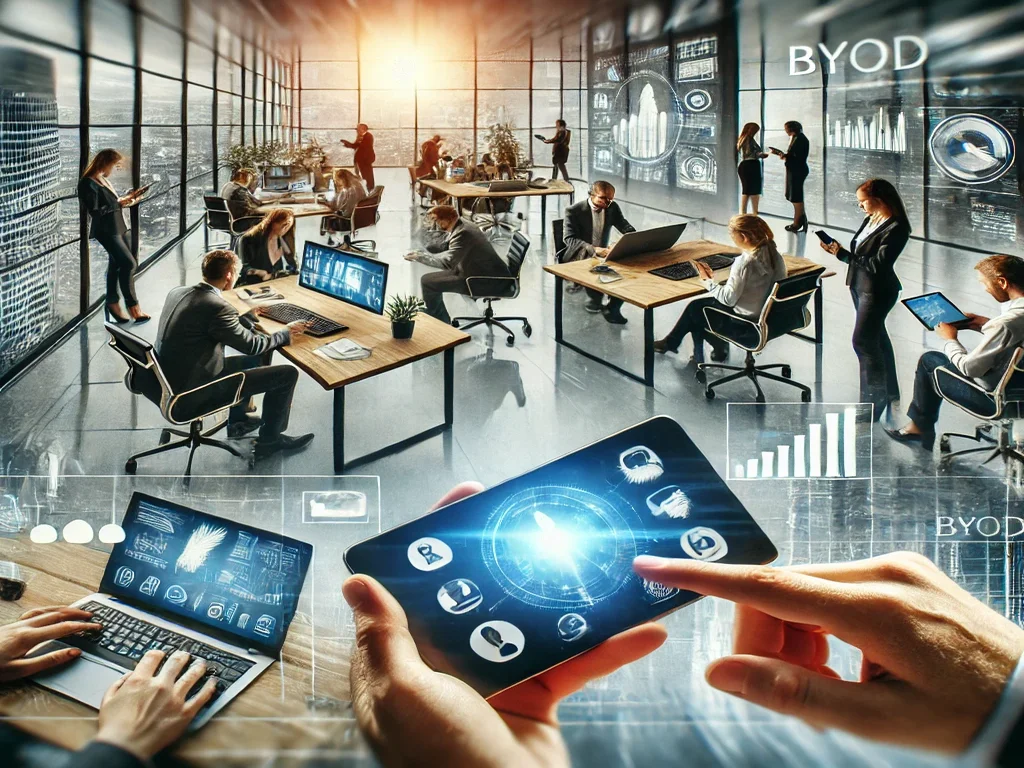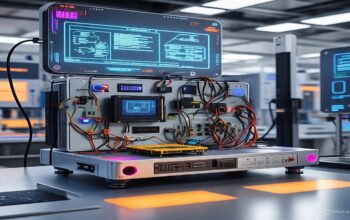This change has been on for the past ten years regarding how we work, and this has been partly contributed by the increase in mobile computing. Nowadays, smartphones, tablets, and laptops are all powerful and can do anything for any employee in any place outside of their work desks. One of the most powerful trends driving such changes is the BYOD model; this is the culture whereby employees are allowed to bring their devices into the working premises to enable them to execute work.
BYOD is a buzzword not anymore; on the contrary, it changes business and employee games. The article discusses how mobile computing and BYOD change the nature of the working culture, associated benefits and issues, and where the future belongs for this relentlessly growing trend of BYOD.
Covered Contents
ToggleWhat is BYOD, and Why is it So Popular?
This permits employees to bring their devices to the company premises, which might be their smartphone, tablet, or laptop. Employees will use such devices for work purposes. The technology has gained fast momentum for the following reasons:
Company Savings:
Companies cannot make a single large upfront cost to acquire the company-owned equipment. Hardware, in this respect, is purchased by the people.
Employee Comfort:
Employees will be comfortable using what they already have or love. Such comfort translates to increased productivity and satisfaction.
Flexibility and Mobility:
BYOD allows the employee to get work done from their home, a coffee shop, or even while traveling. This flexibility is especially valuable in today’s hybrid work environments.
Technological Advancements:
Nowadays, the powerful mobile devices of today can keep up with challenging work assignments; from video conferencing to analyzing data, thus making BYOD possible for any industry.
How BYOD is Transforming the Workplace
Increased Productivity:
Employees who use their own devices tend to work more efficiently. They already know the interface, apps, and features, so the learning curve is lower. Moreover, mobile computing enables real-time collaboration using tools such as Microsoft Teams, Slack, and Google Workspace, which makes teams stay connected and productive no matter where they are.
Seamless Remote Work:
The COVID-19 pandemic accelerated remote work and was one of the key enablers of BYOD. Employees can easily switch to working from home as long as the business continues and with the use of personal devices. Even as offices reopen, companies are implementing hybrid work models. BYOD supports this flexibility.
Enhanced Employee Satisfaction:
Allowing employees to use their favorite devices can improve morale. It shows that employers trust their employees and care about their comfort. This feeling of independence can contribute to increased job satisfaction and retention.
Cost Effectiveness:
As mentioned earlier, BYOD saves a company from heavy financial burdens. Businesses need not purchase and maintain a fleet of devices. The money saved can be utilized for other essential sectors like software development or employee training.
Challenges of BYOD in the Workplace
BYOD has its own set of pros, but there are several challenges it brings along. Issues need to be addressed to ensure smooth and secure implementation at companies.
Security Vulnerability:
With BYOD comes data security risk. PersPersonal attackers’ access to decadence devices is less safe than company-owned devices, exposing them to the risk of hacking. If a thug or an attacker, corporate data may easily be compromised.
Solution: Organisations use MDM solutions to enforce security policies, encrypt all data, and then remotely wipe devices. They should train employees on best practices for securing their own devices.
Privacy around Data:
The employees are concerned about the privacy of their devices while working. The employee may not want his employer to have access to personal photos, messages, or apps.
Solution: Clear BYOD policies must be put in place, detailing what company information will be accessible and how it is to be used. This builds trust.
Compatibility Issues:
Not all personal devices are compatible with business software or systems. This leads to technical issues that may result in a lack of productivity.
Solution: Businesses need to standardize on the apps and platforms. In this way, they will have ensured that there is enough compatibility and workability on different devices and operating systems.
Support and Maintenance:
Supporting the IT department when employees use their devices can be problematic. This is because there are many varieties of devices, requiring much time in troubleshooting, not to mention being hard as well.
Solution: Companies can limit the support provided for personal devices or give some guidelines to troubleshoot common issues.
The Future of BYOD and Mobile Computing
BYOD is here to stay, and with technological advancement, it will continue to grow. Some predictions for the future are as follows:
5G Connectivity:
The rollout of 5G networks will make mobile computing even faster and more reliable, allowing seamless remote work and real-time collaboration.
AI Integration:
Artificial intelligence will play a more significant role in mobile computing, with smart assistants and predictive analytics helping employees work more efficiently.
Improved Security:
As cyber threats grow, security systems will become even more complex. Advanced encryption, biometric authentication, and AI-driven threat detection will help BYOD environments become more secure.
Wearable Devices:
BYOD may involve devices such as smartwatches and AR glasses to provide innovative means of working and collaborating.
Green Focus:
Companies will start forcing their employees to use green devices that are aligned with the goals of sustainability in the BYOD policies.
Recommended Best Practices in BYOD
If your organization is planning to implement BYOD, then these suggestions will ensure that the deployment of BYOD goes without a hitch:
BYOD Policy Development:
Set guidelines, obligations, and expectations related to work usage through personal devices for the employees.
Investment in Security Solutions:
Utilize MDM software, VPNs, and encryption for the protection of company data.
Training Employees:
Educate employees on best practices related to cybersecurity and the use of proper devices.
Standardize the Compatible Tools Applications and Platforms:
Opt for standard applications and platforms that are compatible and run across different devices and operating systems.
Monitor and Adapt:
Keep checking and adapting the BYOD policy on emerging issues and opportunities.
Conclusion
Mobile computing and BYOD have revolutionized how people work because they have introduced unprecedented flexibility, productivity, and cost savings. However, to avail maximum benefits of BYOD, businesses must grapple carefully with security and privacy-related issues.
As time unfolds, BYOD will form the very foundation of the modern workplace. The businesses that catch the wave of BYOD in advance and manage to implement it smartly are better placed for a bright future.
So, whether you’re an employer considering BYOD or an employee enjoying the flexibility it offers, one thing is clear: mobile computing is changing the game, and the future of work is in your hands—literally.



I m on And did not just talk some chow Why